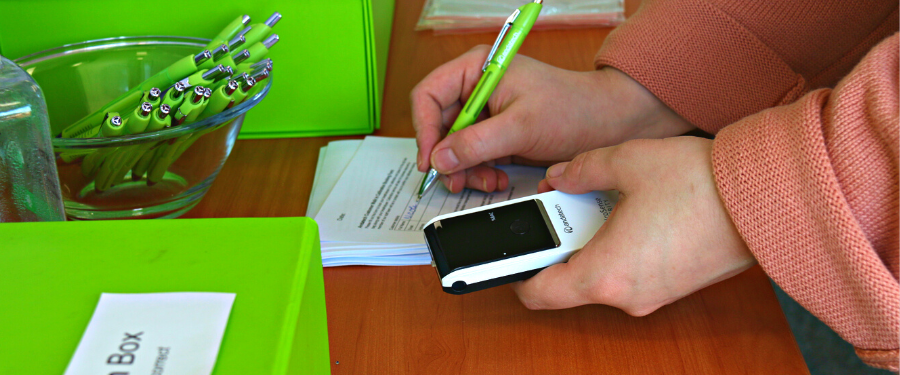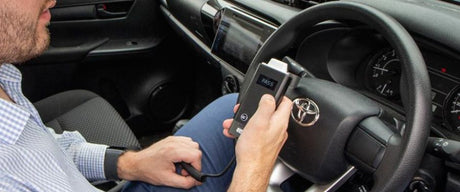Breathalysers are used by police officers, health and safety officers, medical professionals and even everyday Australians to determine one’s blood alcohol content/concentration (BAC) or breath alcohol content/concentration (BrAC).
With many different brands and models in the Australian market, it's no secret that not all breathalysers were created equal. Units used by police at random roadside testing would be of a different quality to wall-mounted breathalysers seen in bars or the personal breathalyser that responsible drinkers carry with them.
What affects breathalyser accuracy
As Australians continue to become more concerned with responsible drinking, the accuracy of breathalysers becomes an increasingly important issue. in many states and countries, the result of an alcohol breath test could be what determines a violation of the law.
Here are some factors that affect a breathalyser's accuracy.
The sensors used
Fuel cell
Fuel cell breathalysers are considered more accurate than their semiconductor counterpart as they use fuel cell technology that contains two platinum electrodes with a permeable acid-electrolyte material between them. When a breath sample flows through one side of the fuel cell, the platinum instantly oxidizes the breath alcohol and generates electrons, acetic acid and protons.
The higher the amount of oxidized alcohol, the more electric current will be produced. This electric current will then flow through a wire connected to an electrical-current meter which converts the reading into BAC.
However, some breathalyser models employ higher-grade fuel cell technology, such as industrial or police-grade sensors, allowing for more accurate readings than regular fuel cell models.
All Andatech and AlcoSense breathalysers use fuel cell technology to produce accurate results.
Semiconductor
Semiconductor breathalysers are more cost-friendly as they are cheaper to produce. This technology uses a semiconductor oxide sensor to measure how much alcohol is present in a test subject’s breath. The oxide sensor will be heated to a specific temperature, causing the resistance of the sensor to change depending on the amount of alcohol present in the breath sample.
The reading produced is a result of the change in resistance. Although less expensive than fuel cell models, semiconductor breathalysers are more susceptible to false readings as the sensor within the unit might mistaken substances such as acetone (present in a person’s breath) as alcohol. This can result in false readings.
Presence of foreign substances
Certain everyday household substances such as mouthwash or cough syrup contain certain levels of alcohol that is likely to interfere with the accuracy of breathalyser readings. It’s important to avoid eating or drinking anything at least 15 to 20 minutes before a breath test to ensure the most accurate results.
Environmental conditions
Environmental conditions such as temperature, humidity and contaminants in the air can cause readings to be inaccurate. For example, suppose a breathalyser is exposed to moisture caused by high humidity levels or contaminants in the air, such as chemicals or petrol fumes. In that case, the contaminants could enter the breathalyser and interfere with the sensor and its readings.
Health conditions
Some medical conditions like acid reflux or gastroesophageal reflux disease (a condition that causes contents of one’s stomach to reflux back into the esophagus) can cause elevated levels of alcohol in the breath. This is more apparent when the test subject had recently consumed alcohol. This inadvertently causes results to be higher than what they normally should be.
Patients with diabetes are also at risk of inaccurate breathalyser readings, as having the condition can cause elevated levels of acetone in the breath. Semiconductor breathalysers may mistaken acetone for breath alcohol and produce an elevated reading that is inaccurate.
Consuming medication that contains alcohol will also elevate breathalyser readings.
Operator error
To achieve the most accurate results, breathalysers must be operated correctly according to manufacturer instructions. Some of the essential tips to follow when using a breathalyser are
- Wait 15 to 20 minutes after eating or drinking before taking a test
- Avoid sharing a mouthpiece with friends, as alcohol residue from a previous test can end up being blown into the unit’s sensor
- Ensure the mouthpiece is clean and dry
- Blow into the unit long enough until a click or beep is heard
Condition of breathalyser
As a breathalyser continues to be used over time, the condition of the unit itself may be affected, causing inaccurate readings. This is especially more common when a breathalyser is not taken care of or maintained optimally.
Certain factors, such as accidental falls or storing the unit in conditions hotter or colder than what is recommended by the manufacturer, can cause the unit to be damaged, resulting in inaccurate readings. Always ensure that your breathalyser is maintained and cared for optimally to continue getting accurate readings on your unit.
Calibration
Breathalyser calibration is arguably the most important aspect of maintaining your breathalyser. Just like any other measuring device, constant use of the equipment is likely to result in sensor drift that can cause readings to be inaccurate over time. By calibrating your breathalyser every six to 12 months (or the number of tests conducted), depending on the manufacturer’s recommendation, your breathalyser will remain accurate and ready for testing at all times.
AlcoSense personal breathalysers and Andatech workplace breathalysers offer an extended guarantee of five years up to a lifetime if your breathalyser is calibrated regularly.
Browse our full collection of breathalysers suitable for individuals and workplaces across Australia.





